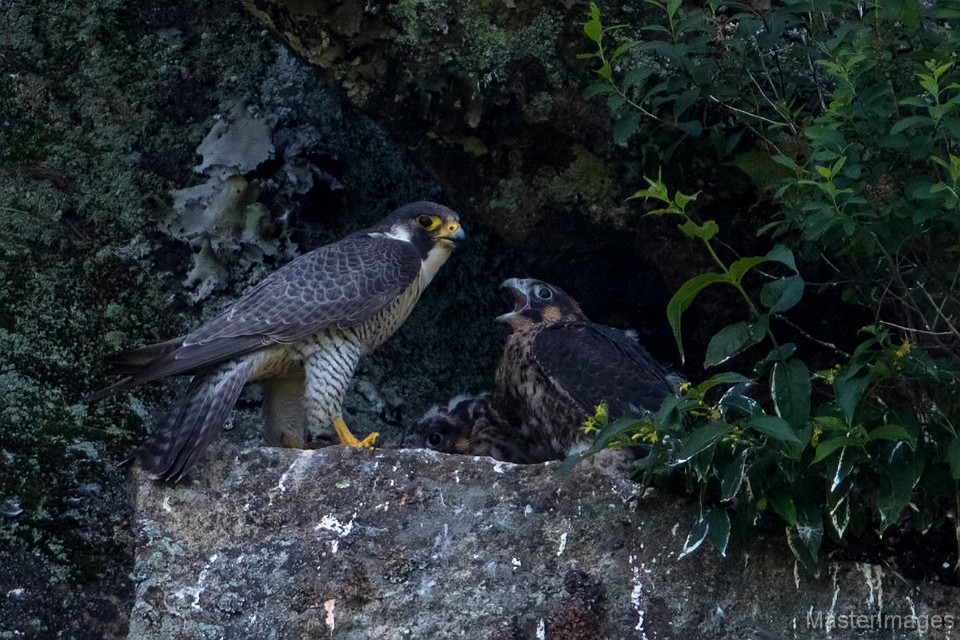
Is the Endangered Species Act in Danger? | Lessons to Learn from Red Wolves
Monday, September 17, 2018
By: Meg Desmond - Adirondack Council Clarence Petty Intern
The Case of the Red Wolves
As the purple night evaporates in the early glow of dawn, once bright stars slowly fading, a burst of motion across the horizon accompanied by a high forlorn howl, cuts through the stillness. Silent paws dig into the clay as a pack of red wolves return to their den.
These nocturnal hunters will spend the day among the dense wood and leafy growth, finding protection within hollow trees, stream banks and sand knolls. The majority of the pack assists with the care of the young, bringing food to the alpha female. Only the alpha male and female pairing reproduce, leaving the subordinate pairs to support the pack.
Once a vibrant population ranging from Pennsylvania to Florida and as far west as Texas, the red wolves’ domain of the southeast Unites States has dwindled to a small corner of North Carolina. Now, only 40 wolves remain between a five county-wide recovery area in northeastern North Carolina and the Alligator River National Wildlife Refuge (ARNWR) along the coast.
Because of this exceptionally small population, red wolves have lost their designation as endangered and instead, these few remaining canids, are classified as a Nonessential Experimental Population (NEP). A group is an NEP when the remaining population is considered unable to return the population to a sustainable level.
On June 28, 2018, the US Fish and Wildlife Service (USFWS) proposed a rule that would eliminate protections for the red wolves’ recovery area, allowing open season on all red wolves outside of the ARNWR. This land makes up 90 percent of the wolves current habitat and approximately 60 percent of the population lives within these bounds.
Although red wolves do not inhabit the Adirondack Park, we should be concerned about the actions being taken by the USFWS. Why? Because this rule sets a dangerous precedent for the treatment of other endangered species, including those who call the Adirondacks their home like the Spruce Grouse, Short-Eared Owl, Peregrine Falcon, and Indiana Bat.
 Peregrin Falcon and chicks
Peregrin Falcon and chicks
Violating the Endangered Species Act
This action is in direct violation of the Endangered Species Act (ESA). While NEPs are treated as Threatened species as opposed to Endangered, therefore being subject more lenient protections, there are still clear regulations regarding the permitting of “takes” (hunting/ trapping) of this species.
Section 4 of the ESA states that the duty of the Secretary of the Interior is to provide for the conservation of species. This action deliberately ceases all efforts to protect the species and in fact permits the taking of them.
Section 10 of the ESA highlights the specific circumstances under which the Secretary can issue a take. It describes the need for a detailed conservation plan on why the take is necessary and any alternatives that may allow it to be avoided. The only time a Secretary is otherwise permitted to authorize a take is when it is permitted for scientific purposes or to enhance the propagation or survival of the species. However, allowing open hunting will not enhance the propagation or survival of the species, but rather lead to its demise.
Section 7 of the ESA calls upon all federal agencies to confer with the USFWS on all matters pertaining to the existence of a species. It is expected that the USFWS holds the best interest of the species, but this rule would set an inappropriate precedent for the treatment of at risk species.
Further, this proposal contrasts with a 2016 Federal court ruling in the case of Red Wolf Coalition, et al., v. United States Fish and Wildlife Service, et al. U.S. District Judge Terrance held that the USFWS’s authorization of the taking of red wolves given the “decline or extinction of the species would cause them to suffer irreparable harm.” This resulted in the revocation of private land owners’ taking permits. Under the proposed ruling, the hunting of red wolves would be permitted outside of the Alligator River National Wildlife Refuge and adjacent land area. This conflicts with previous management practices that were deemed critical to the protection of the species.
Unfortunately this is only the most recent in a series of attacks on the ESA.
 Spruce Grouse
Spruce Grouse
A Brief History of the ESA
The conservation and protection of endangered species began in zoos in the early 1960s. Thanks to pressure from environmental activists, Congress passed the Endangered Species Preservation Act in 1966. This permitted land acquisition for the purpose of protecting certain species of native fish and wildlife. Three years later, Congress expanded this legislation to include a catalogue of endangered species, which became the first version of a federal endangered species list.
In 1973, Congress passed the Endangered Species Act as it stands today. It serves to protect threatened species from logging, drilling, developing, and other human activities that may result in the degradation of a species’ population. During the Nixon administration, environmentalism had yet to become a partisan issue and the ESA’s passing was viewed as a victory.
Since its enactment, over 1,600 species have been placed on the Endangered Species List. Of those, 99 percent of the populations were protected from extinction. This has proven to be one of the most valuable and successful conservation efforts.
Attacks on the ESA
However, as environmental actions become increasingly politicized, more and more attempts to undercut the ESA are being proposed. The Center for Biological Diversity completed a comprehensive report on the attacks on the ESA that highlights over 300 direct attempts to undercut the act since 1996. Further, the majority of these occurred within the last five years. The 114th Congress drastically increased efforts to eliminate protections on species, setting a record of 135 attacks. This pattern continues to grow under the Trump administration and the 115th Congress. Since January 3, 2017, an additional 75 legislative attempts to undermine the ESA have been introduced.
Dangerous Patterns
There is no excuse for removing the legal protections that stand between endangered species and extinction. Every species that disappears leaves a gap in the web of life, which in turn degrades the life-support system for all living things, including humanity. Treating nature with care is the best way to care for ourselves too. Yet, the Trump administration is facilitating blatant attempts to remove protections on specific species and weaken the integrity of the Endangered Species Act. As shown in the case of the red wolves, the USFWS is participating in inappropriate actions to remove protections and weaken federal enforcement. Without these critical components of the ESA, we put the future of our own species, as well as the biological diversity and fragile ecosystems that support us, at risk.
|





